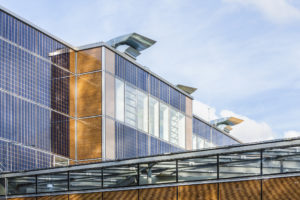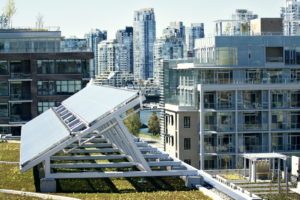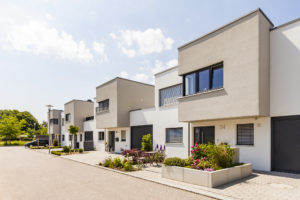
Retrofits: Capturing benefits at the energy|resilience nexus
 Hardly a day goes by that a news story doesn’t cover a disaster event somewhere in the world. The U.S. has certainly had its share of disasters recently. In 2017, there were 16 disasters costing $1 billion or more—totaling over $300 billion in damages.
Hardly a day goes by that a news story doesn’t cover a disaster event somewhere in the world. The U.S. has certainly had its share of disasters recently. In 2017, there were 16 disasters costing $1 billion or more—totaling over $300 billion in damages.
In 2018 there were 14 such disasters. Already in 2019, before the start of hurricane and wildfire seasons, two such events have occurred. In fact, since 1980 the U.S. has experienced 246 disasters causing $1 billion damages or more, for a total impact exceeding $1.6 trillion, per the Washington, D.C.-based National Oceanic and Atmospheric Administration.
The impacts of such events are felt throughout the community. Lives are disrupted as the community works toward recovery. Building owners are particularly impacted. Damaged buildings can trigger costly repairs and lost revenues as tenants must relocate (or worse, close up shop completely). Research has shown that following a disaster, roughly 40 to 60 percent of small businesses never reopen and 90 percent fail within a year if they can’t resume operations within five days. Keeping businesses open supports a community’s ability to “bounce back”—a key component of what it means to be resilient.
Although a building owner may not fully recognize his or her disaster risks (and there are few places without some risk), one thing is certain, operating costs—particularly energy—are an ongoing burden. Fortunately, there are opportunities to “kill two birds with one stone.” An expanding body of research is examining the ability to capture both energy efficiency and resilience benefits, or co-benefits, through the application of certain measures. This focus on the energy/resilience nexus provides new avenues for retrofits that capture multiple benefits.
Retrofits at the energy/resilience nexus
As building owners undertake retrofit activities, investments in mitigation can provide multiple returns. Some insurers may recognize the protections provided by resilience measures in the form of premium reductions; tenants or future buyers may place increased value on resilient properties (particularly when they are aware of such enhancements); and owners and tenants may save on energy costs. Updating an existing building to comply with provisions of the most recent edition of an energy code, like the International Energy Conservation Code (IECC), can help deliver significant energy savings.
Increased energy efficiency in general when coupled with provisions for onsite electricity generation (whether through generators, CHP, or onsite renewables and storage) can extend the supply of onsite power generation by reducing the overall energy needs to provide essential functions. This could allow for a reduction in fuel storage needs or allow for longer operations without grid-provided electricity. Such a holistic strategy may also have benefits in non-hazard conditions, allowing increased participation in demand-response programs or reducing peak loads.
Either following a disaster event or in times of extreme heat or cold events, loss of power or reductions in service can impact the ability of a facility to remain safe for occupancy. The concept of passive survivability means that a facility continues to provide the services necessary (particularly air and thermal quality and water and sewage services) despite a loss in power.
A study by the Urban Green Council and Atelier Ten, both of New York, found that in New York City buildings, during a winter blackout, a typical high-rise apartment would drop to 45 F within three days and continue to fall. In a summer blackout, a typical high-rise apartment would reach 95 F by the fourth day and peak at over 100 F. Strategies applicable to building retrofits can help keep temperature changes more gradual. Increased insulation, reducing air leakage (in conjunction with a proper passive ventilation strategy) and operable windows can all be part of a passive survivability strategy. Proper use of daylighting and avoiding blocking light that could reach into spaces could also make a facility more comfortable during a blackout.
Attention to detail on sealing and insulation can also limit the potential for rot, mold and mildew following extreme temperatures or some water-related events. Heat, air and moisture transfer can all contribute to indoor environmental quality issues.
Reducing the impacts of urban heat islands can provide energy efficiency and resilience benefits. Roof replacements can contribute to passive survivability, reducing the impacts of extreme heat at both the community and the building level.
Financing mitigation activities
These are just a few strategies that can be deployed during retrofit projects that capture co-benefits of enhanced resilience and energy savings. Despite these benefits, securing internal funding for disaster mitigation and energy-efficiency improvements may be challenging.
Recognizing the benefits mitigation measures provide to building owners and communities, many Property Assessed Clean Energy (or now more appropriately called Property Assessed Capital Expenditure) programs are starting to include mitigation as an eligible PACE project. PACE programs in California support seismic retrofits that can be done alongside or independent of energy- and water-efficiency improvements. Florida PACE programs allow hurricane mitigation measures. Other states are beginning to follow suit. At a community level, a recent study found that avoided property damage from hurricanes due to the Florida PACE program topped $507 million. [Read “Impacts of the Property Assessed Clean Energy (PACE) Program on the Economies of California and Florida”, published by the Sol Price School of Public Policy.]
The Washington-based U.S. Department of Energy offers a toolkit on Commercial-PACE for resilience, including case studies. One case study covers the retrofit of the Southern Oaks Rehab and Nursing Center in Pensacola, Fla. Southern Oaks partnered with Counterpointe SRE to secure a $500,000 PACE deal, which paid for a full retrofit of the building’s windows and roof. The installed windows are rated to withstand winds of up to 200 mph and have a low-e/ argon glazing U-value of .28. The low U- value windows provide greater resistance to heat flow, resulting in cooler interior temperatures and less demand from cooling units.
Resilience does pay off
The growing threat of disaster is placing increased pressure on communities and building owners to be prepared to weather the storm. Fortunately, there are measures building owners can take to reduce the risk to their facility while also capturing ongoing benefits through reduced energy costs. Later this year, the National Institute of Building Sciences, Washington, will release the next edition of its widely cited “Natural Hazard Mitigation Saves” study—this time with an examination of the benefits associated with building retrofits. Quantifying these benefits will hopefully provide additional justification for investing in retrofits that capture both energy and resilience benefits.
Who is ANCR?
 The Washington, D.C.-based Alliance for National & Community Resilience is developing the tools to assist communities in evaluating and improving their resilience. Founded by the International Code Council, the U.S. Resiliency Council and the Meridian Institute, ANCR is a 501(c)(3) national coalition of public- and private-sector stakeholders working to advance community resilience.
The Washington, D.C.-based Alliance for National & Community Resilience is developing the tools to assist communities in evaluating and improving their resilience. Founded by the International Code Council, the U.S. Resiliency Council and the Meridian Institute, ANCR is a 501(c)(3) national coalition of public- and private-sector stakeholders working to advance community resilience.
This article originally appeared in the July 8, 2019, issue of Retrofit Magazine and is reprinted with permission.









